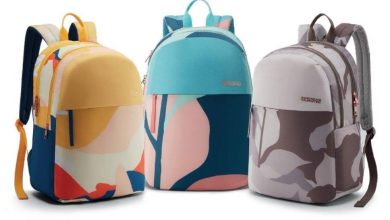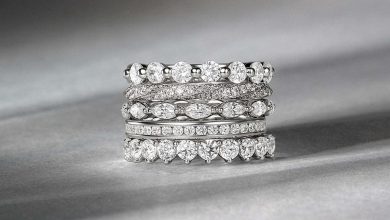
Among young Indians, fashion design is a popular and promising field of work. As a result of the success of Indian fashion designers like Rohit Bal and Sabyasachi, an increasing number of young individuals in India are considering a career in the industry. However, although other professions need formal education, fashion design does not. In this post, we will go further into how to become a fashion designer without a degree by emphasizing the importance of hard effort, creativity, and tenacity.
Hopes And Aspirations
Many young people nowadays fantasize about breaking into the fashion business without a formal education. Most people immediately place their faith in your abilities and respect your judgment when they realize you have earned a degree from a reputable institution. However, if you opt out of the best fashion designing colleges in Jaipur you will have to put in more time and effort to beat the competitors and realize your goals.
As a burgeoning fashion designer, your portfolio should display your original concepts and designs, whether drawn by hand or created digitally. Showing your portfolio to investors is a necessary step in starting your own company or fashion studio, and it will help others hire you.
Inspiration and Exploration
Becoming a successful fashion designer requires a high level of innate creativity. Creativity and imagination drive the urge to elevate a mundane topic to the level of a breathtaking work of art. Being able to think creatively will go you far in your professional life.
Create Your Unique Aesthetic
Discover your special talent by pursuing your passions. Anita Dongre aims for grace, elegance, and comfort in her contemporary designs. In contrast, Sabyasachi is revered for his royal and traditional wedding wear, and Manish Malhotra for his shimmering and sassy indo-fusion creations.
Get Your Education In The Field Of Fashion
Pursuing a bachelor’s degree in Fashion Design is the conventional path to entering the fashion industry. The creative and technical components of garment production, pattern creation, and design and idea development are all covered in depth in a fashion design degree program.
Courses in CAD (computer-aided design), fabrics, figure drawing, and the history of fashion design will round out your education as you learn to shape your ideas into a cohesive collection.
Network
More people will notice your portfolio if you have a large social network; some may fall in love with your work and want to employ you immediately. As a fashion designer, you should think about how to become popular on sites like Instagram.
Fill your profile with professionally taken portfolio images you spent time and money on. But don’t flood the feed with updates all at once; rather, create a posting schedule and stick to it. Your fan following will grow steadily over time, and having it as social proof will make it much simpler to get a job with a major company or secure funding for your startup.
Research-Oriented
What is in style today reflects our culture — or our rejection of it. Some fashions come back around, while others gain popularity after being mixed with older or newer looks. The designer’s success might be aided by thorough research into client preferences.
You will need sharp marketing and commercial practical understanding to move your creations. The key is to bring your unique perspective and imagination to the interpretation.
How to Get Into a Fashion Design College After High School
- Students enrolling in fashion design programs after high school may encounter varied degrees of competition for available spots.
- Those seeking entry into a certificate course in fashion design will be admitted directly. Students looking for fashion design courses after high school may narrow down their options by visiting the school’s website and selecting a certificate program there.
- Students are often chosen for fashion designing course in Jaipur beyond the 12th diploma and advanced diploma based on their performance in prior exams. During the interview, one will assess the candidates’ credentials; these scores will determine the final choice.
- After finishing high school, students who want to continue their studies in fashion design at the undergraduate or graduate level must take admission tests like the NID, CEED, DAT, and NIFT, among others. The examinations are used to determine who gets chosen.
- After completing high school, prospective students for Ph.D. fashion design programs must take the CSIR, UGC, NET, and a handful of other prestigious exams.
- Candidates must go beyond this, perform well in interviews, show that they have done the required research, and have a thesis proposal to move on to the next phase.
- Available Fashion Design Programme Entrance Exams In India, students who want to study fashion design after high school must take one of many important entrance exams.
Who Exactly Is A Fashion Designer, And What Do They Do?
Accessory designers make belts, scarves, hats, purses, and hosiery. Well-known couturiers, less-famous designers working for ready-to-wear firms, and fashion stylists who may make minor alterations to already-designed outfits are just a few examples of the numerous tiers in the fashion design industry.
Fashion designers are looking at new technology like body scanning to provide a more tailored fit and seamless knitting to mass-manufacture outfits with the touch of a button. New technology, resources, and equipment will continue to transform the fashion business like the sewing machine did in the past. High-tech textiles, such as those with sun protection and other specific features, may help fashion designers create new product lines.
- Some of the essential duties of a fashion designer are as follows:
- Create a range of sizes and fabrics in a certain fabric type.
- Make rough sketches, choose materials and patterns, and decide based on what you think the market would like.
- Research current fashion and provide an account of it to your readers.
- The process of seeing a design from its earliest conceptualizations to its finished form.
- Collaborate with your team to decide on seasonal themes, develop fresh concepts, and fine-tune the line.
Conclusion
You could consult a stylist to find out the most requested services and current fashion trends. Talking to other people in the fashion business might help you integrate new ideas and research your target demographic.



